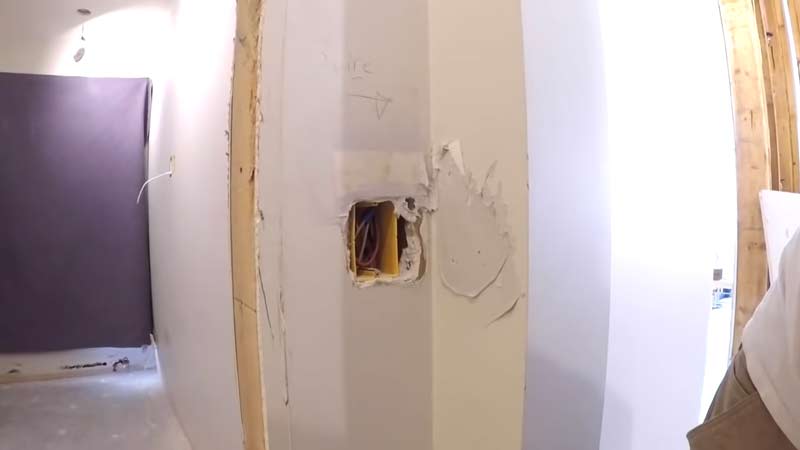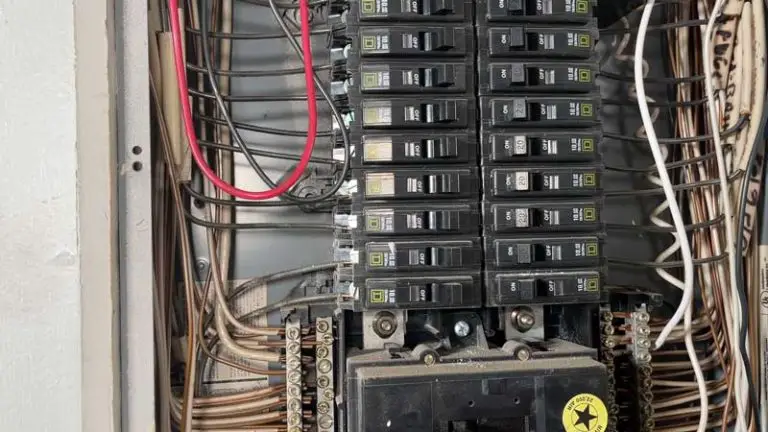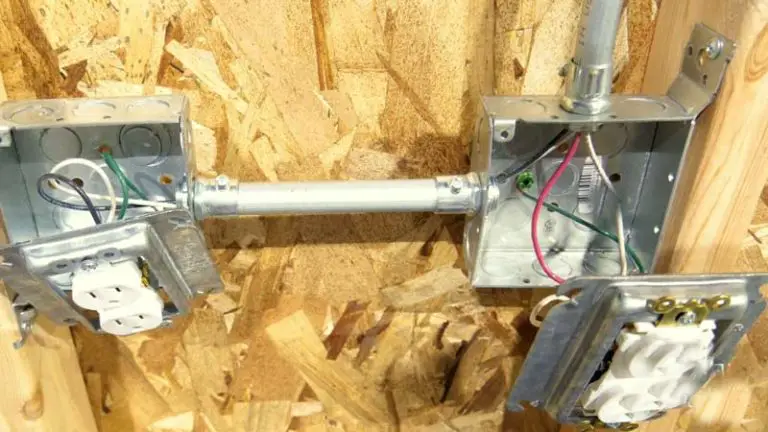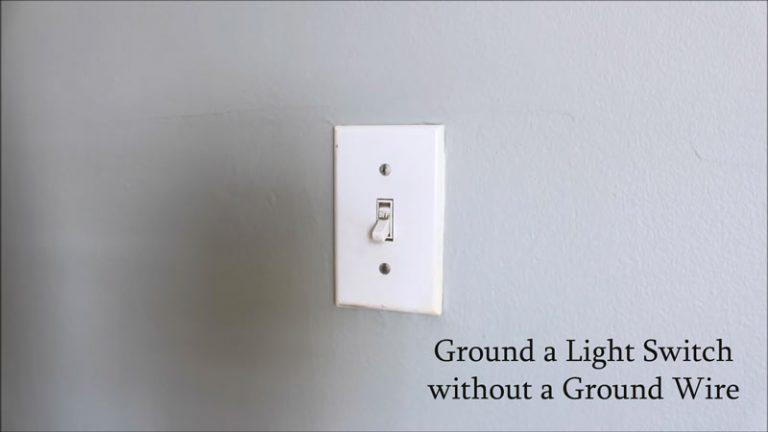Can Junction Boxes Be Covered With Drywall

Junction box covers must remain accessible to properly wire a room or install an electrical device. Do not cover junction box covers with drywall or other surface material. They are necessary for proper wiring and installation.
Always make sure that your junction box covers are accessible. This ensures you don’t have to dig around under the wall when you need them. Keep your junction box covers clean and free from debris. This will help ensure that they work properly and look their best.
You'll Learn About
Can Junction Boxes Be Covered With Drywall?
If you have a junction box cover, it’s important to make sure that the surface on which it is located remains accessible. Junction box covers are not meant to be covered with drywall or other material. They need to remain open so that you can access your electrical wiring.
It’s also important that the surface around a junction box is solidly built. It shouldn’t allow for easy removal of the cover. Otherwise, your wiring will be hidden and less accessible when necessary. Finally, keep in mind that covering up a junction box can lead to problems down the road. Always consult an expert if something seems amiss.
Junction Box in our Home
A junction box is most often used where an electrical circuit branches off in two or more directions. This is from a location where an outlet or fixture is not practical.
A junction box is a small metal or plastic enclosure. It provides an outlet and switch for one or more electrical circuits. The most common use for a junction box is in places where an outlet or fixture is not practical. For example, the corner of a room.
You can cover a junction box with drywall if you want to conceal it from view. Make sure to measure your wall carefully before beginning the project. This ensures the resulting hole will fit properly on your wall surface. Be aware that there may be some installation restrictions when covering a junction box with drywall. This depends on its location and type.
Junction Box Covers Must Remain Accessible
You need to make sure that the junction boxes are still accessible while their covers are in place. There are a variety of junction box cover types to choose from. You can find one that best suits your needs.
It is important to measure and test the fit of the cover before applying it securely to the junction box. Covering your junction boxes with drywall may result in less access for technicians. This is when repairs or changes need to be made. Be aware of this potential downside before making a decision.
Consult with an electrician if you have any questions about how best to proceed. They will be able to advise on proper installation procedures. They will also ensure no damage is done during the process.
Don’t Cover Junction Box with Drywall
If you are looking to cover the junction box with drywall, this is not an option due to structural integrity concerns. Another surface material such as painted plywood or MDF could be used instead. However, it would need to be covered with a proper exterior finish.
The junction box should always be accessible for the necessary wiring and fixing connections. Avoid any type of wall covering that would make this difficult or impossible. Avoid using carpet on top of the junction box. This can cause undue wear and tear over time. It also increases your chances of needing replacement sections in the future.
Keep in mind that if you decide to go ahead with covering the junction box, it’s important to consult an experienced contractor. They will be able to provide accurate measurements and advise on the best approach for your specific situation.
Importance of Keeping Your Junction Box Covers Accessible
Junction boxes are an important part of your home’s wiring system. They should be kept accessible to avoid any potential problems. Covered junction boxes can lead to confusion and potentially dangerous situations. This is when you’re trying to troubleshoot a wiring issue.
You can keep junction box covers accessible by using drywall or another surface material. Avoid covering them up with wallboard or other materials. If you do choose to cover a junction box, make sure that the cover is easily removable. This ensures you have full access to repairs or inspections in the future.
Make sure that all wires going into and out of your junction box are properly insulated and labeled. This minimizes the risk of electrical shock.
When Can You Cover a Junction Box with Drywall?
When you’re covering a junction box with drywall, it’s important to make sure that the area around the box is completely covered. This ensures no water or other liquids can get into the electrical system or any other parts of the system.
Make Sure There Are No Wires Inside The Box
You should never cover a junction box with drywall if there are any wires inside of it. This could cause serious electrical problems and potentially even a fire. When you’re finished, make sure to check for any hidden wires. Disconnect them before covering the box up.
Choose Covers That Fit Correctly And Are In Good Condition
When choosing a cover for your junction box, be sure that they fit properly and are in good condition. You don’t want anything falling off or getting damaged while the drywall is being installed. Also, make sure to attach the cover using machine screws. This ensures it’s securely fastened in place.
Attach The Cover With Machine Screws
Covering a junction box with drywall shouldn’t require too many tools or skills. Just use some machine screws and you’re done.
Be careful not to overtighten the screws though. This can damage the plastic coverings on the junction box itself.
What Happens If You Cover a Junction Box?
If you cover a junction box, it will stop the flow of electricity to or from certain parts of your car. This can cause problems with the car’s systems, including the engine and lights.
If you don’t take care when covering a junction box, it could also lead to electrical shocks. If you cover a junction box, it is possible that you will cause a fire. This can be difficult to repair and may result in poor electrical performance.
Additionally, the lack of airflow through the junction box can lead to problems with noise and damage.
Can a Junction Box Be Enclosed in a Wall?
Yes, a junction box can be enclosed in a wall. This is an important feature for people who have small spaces and need to keep their electrical wiring organized.
It also makes it easier to install or remove the junction box from the wall.
- A junction box needs to be easily accessible. This ensures you can fix or change whatever is inside it. If the box is buried in the wall, it will be more difficult to get to. It may also cause problems with your wiring.
- It’s not practical to enclose a junction box in a wall. This would often require cutting a hole through the wall. This could be dangerous if done incorrectly. Additionally, this type of installation would also create additional electrical risks for you and your customers.
- Cutting a hole in the wall is usually necessary when installing or modifying a junction box. This is when burying it underground isn’t an option. It is also necessary when space restrictions prohibit using an enclosure altogether.
Do Junction Boxes Need to Be Covered?
A junction box is a metal or plastic box located near the entrance of an electrical panel. It connects different wires from different sources. Covering the junction box reduces heat damage and decreases energy bills.
Not covering a junction box can result in fires. It can also result in injuries from electrical shock. This is especially true if there is no other protection around it. It is easier to maintain and keep clean when covered. Moreover, reduced heat means fewer injuries from electrical shock.
Can You Drywall Over Live Wires?
There is always a risk of electrical shock when working with live wires. It’s important to be aware of the dangers before you begin any project. If you are unsure if a wire is live or not, test it by touching one end on a metal object. If the voltage jumps up, then the wire is probably live.
Electrical Wires Should Never Be Buried Behind Drywall
Dead or live electrical wires should never be buried behind drywall. This is a dangerous and potentially life-threatening mistake.
If you accidentally bury a wire, you may end up shocking yourself or someone else if they touch the exposed wire. Additionally, exposing live wires means that there is an increased risk of fire.
Edge of Electrical Box Must Be Flush With Drywall
The leading edge of your electrical box must be flush with the surface of the wall. This avoids potential shock hazards when installing new equipment or repairing old damage. When working on any wiring project, it is important to consult with an experienced professional. This minimizes these risks.
Do Not Cover Unprotected Parts Of Your House With Wallpaper
Wallpaper can act as a shield against electric shocks. It can protect vulnerable areas such as windows and doors from accidental contact with electrified objects nearby. It’s also important not to cover unprotected parts of your house – including walls – with wallpaper.
This could result in serious injury if somebody bumps into one of the live wires while trying to hang pictures or ornaments. Instead, use curtain rods, draperies, or other safe methods for covering unsecured surfaces.
Use A Grounding Rod When Installing New Equipment
When installing new wiring or repairing damaged wiring, it’s always best to use a grounding rod. This is instead of just relying on the bare metal studs inside the walls. By using a grounding rod, you reduce static electricity buildup. This could spark an unintended fire during installation or repair work.
Finally, make sure all cables are properly secured. Wrap them around joists, bracing members, or screw anchors before hanging them up. This ensures they don’t swing around and create another danger zone, such as antenna lines, etc.
To Recap
No, junction boxes can’t be covered with drywall. It is important to use a proper build method. Make sure the joints are sealed properly so moisture cannot get into the box. This prevents problems.
Junction boxes must remain accessible and cannot be permanently covered with drywall. Electrical codes require that junction boxes be easily reachable for inspection and maintenance. If you need to conceal a junction box, consider using a removable cover or access panel to comply with safety regulations.
If you’re working on electrical projects, you might also want to explore if your landlord can see your electric bill to understand your energy usage better.





